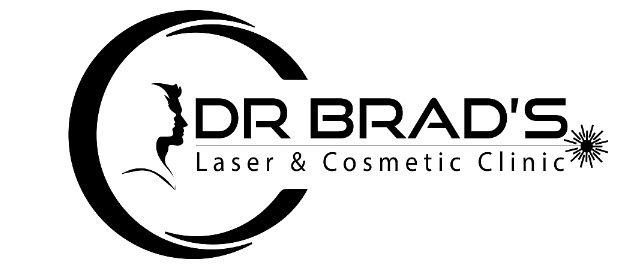When it comes to improving the appearance of wrinkles, fine lines, or facial volume loss, dermal fillers and Botox often top the list of effective, non-surgical treatment options. Deciding between the two can be challenging if you're new to the world of facial aesthetics, but understanding the key differences may help make the decision easier. Whether you’re seeking to plump your lips, soften deep creases, or smooth out crow's feet, it's crucial to understand the capabilities and limitations of dermal fillers and Botox.
Botox: The Wrinkle Relaxer
Botox, short for Botulinum Toxin, is perhaps the most well-known aesthetic treatment for reducing the appearance of fine lines and wrinkles. But how does it actually work? Quite simply, Botox targets dynamic wrinkles—those caused by repetitive facial movements, such as frowning, squinting, or raising your eyebrows. The treatment works by temporarily blocking the signals from the nerves to the muscles responsible for those movements, effectively softening the appearance of lines and wrinkles.
Treatment with Botox is incredibly quick—often taking as little as 15 minutes—and is favoured for areas like the forehead, between the eyebrows (also known as frown lines), and around the eyes for crow’s feet. Results typically become noticeable within three to five days of receiving the injections, with full effects visible by the two-week mark. One of the key advantages of Botox is that downtime is minimal, if any, allowing you to resume your regular activities almost immediately.
However, keep in mind that Botox isn’t suitable for every type of wrinkle. Since it works by relaxing muscles, it is most effective on fine lines caused by movement, rather than those caused by loss of volume. For deeper, static wrinkles, dermal fillers might be what you’re after.
Dermal Fillers: Restoring Volume
Dermal fillers, on the other hand, address a different issue. Designed to “fill” areas of the face that have experienced volume loss, dermal fillers can also be used creatively to sculpt and enhance facial features. They are made from various materials, but the most common is a substance called hyaluronic acid, which is naturally found in the skin.
If your goal is to soften nasolabial folds (the lines running from your nose to your mouth), restore volume to cheeks, or enhance the fullness of your lips, dermal fillers are a great solution. They can also be used to address under-eye hollows and to contour the chin or jawline.
Dermal filler treatments typically take around 30 minutes to complete, depending on the area being treated. The result? Instantly noticeable enhancements, with many patients even leaving the aesthetics clinic looking refreshed, perhaps like they’ve just returned from a rejuvenating holiday! Unlike Botox, which can take some time to fully work its magic, you’ll walk out feeling transformed almost immediately.
One such patient at Dr Brad's clinic, Sarah*, commented after her treatment, “I had always felt my cheeks looked a bit sunken, making me look tired all the time. Within half an hour, Dr Brad reshaped my face so subtly that even my friends didn’t know I’d had anything done—just that I looked brighter!” Sarah was thrilled with her discreet yet stunning results.
Collectively, dermal fillers can last anywhere from six months to over a year, although this varies depending on the product used and how quickly your body metabolises it. And unlike Botox, which affects only movement-related wrinkles, fillers are ideal for addressing deep-set lines or areas in need of some extra volume.
The Key Differences
The most fundamental distinction between Botox and dermal fillers lies in how they work and what they target:
– **Botox** relaxes muscles to soften dynamic wrinkles (think crow's feet, frown lines)
– **Dermal fillers** add volume to plump up static lines (think deep nasolabial folds or loss of volume in the cheeks)
Another significant difference is how immediate the effects are. With Botox, results unfold over a few days, while dermal fillers provide instant gratification. Additionally, while Botox treatments tend to last around three to four months, dermal fillers offer longer-lasting results, typically six months to over a year.
Can You Combine Treatments?
Absolutely! A wise combination of Botox and dermal fillers, often referred to as a “liquid facelift,” can provide a more comprehensive rejuvenation. Botox can be employed to soften dynamic wrinkles on the upper face, while dermal fillers can restore volume and smooth deeper creases on the lower part of the face.
Many patients find that combining the two treatments gives them a more balanced, harmonious look, presenting a refreshed version of themselves—without looking like they’ve gone “overboard” with injections. Dr Brad frequently incorporates both procedures in his holistic treatment plans, carefully evaluating each patient’s unique need before recommending the best course of action.
Why Dr Brad?
When it comes to facial aesthetics, experience and precision make all the difference. As a practising GP and an expert in aesthetic medicine, Dr Brad offers an unparalleled blend of medical knowledge and artistry. He trained with industry leaders, ensuring that the techniques he employs are not only safe but also cutting-edge. His dedicated approach ensures that patients receive individually tailored treatments based on their natural anatomy and aesthetic goals.
Additionally, at Dr Brad's aesthetic clinic Bristol, you’ll receive a thorough consultation where you can openly discuss all your concerns and desires. He emphasises creating subtle, natural results so you never leave looking “frozen” or overly enhanced—just a fresher, more confident version of yourself.
This article does not constitute medical advice. Please book with Dr Brad for a consultation.
